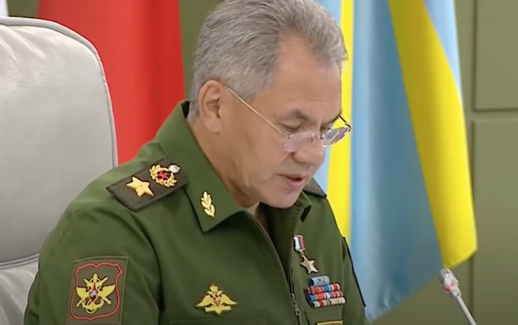Setup:
China’s maritime militia is causing chaos to make a point that everyone gets already: Xi Jinping does not want China humiliated. It uses armed vessel swarms, water cannons, intimidation, ramming, and brinksmanship backed-up by PLA Navy’s terraformed military bases, coast guard, and PLAN assets to assert dominion over the entire South China Sea (SCS or the Sea).
Beijing’s maritime militia risks escalation, and could provoke responses China might use as a pretext for conquest of other nations’ claims, waters, or territory. We know this and China knows we know this.
It is not the United States’ or trading partners’ aim to humiliate, dominate, or colonize Asia. Trade, travel , mutually profit, and share excellent international experiences with? Yes, although we seem to have failed to convince the Chinese imperial court of Xi Jinping of that and so must consider the following.
The swarming force of China’s large numbers of vessels multiplied by their known and unknown capabilities overwhelms civilian, coast guard, and navy assets of SCS nations and freely navigating trading nations. The numeric disadvantages of smaller SCS nations negatively impact their ability to maintain presence to claim freedom of navigation, lawful uses, territorial and or Exclusive Economic Zone EEZ rights.
Checking the Chaos: Fleets of Robotic Craft on Legitimate Civilian Missions
Smaller SCS nations face enough climatic, resource, food, and ecological problems in their bounding seas to justify unmanned remote human-controlled civilian missions using flagged robotic craft for research, conservation, coast guard, and emergency services. The word “craft” implies smaller maritime assets with numerosity, coordination, agility, and more options.
More robotic civilian mission craft could positively impact the health of the Sea’s marine life, trade, and human ecosystems. This civilian emphasis could help reduce the destabilizing military overemphases that creates more SCS problems than it could hope to fix.
Meanwhile, SCS nations showing their value in the maintenance of the health of the SCS as a community of contributing SCS nations can support their reasonable and lawful claims in the SCS whether in their claimed EEZs, international waters, and or in lawful navigation of the greater Sea.
A necessity pressuring some compromises: Marine life populations and their ecosystems are future food source investments to all in the SCS region including China. SCS wildlife and ecosystems do not care about EEZs, 9-dash lines, or human ambitions. They march to rhythms and cadences of tides, undersea activity, and migration that speak to the long game of their own survival, and relatedly, human survival on Earth.
Civilian missions to bolster these ecosystems by any and all SCS participants can help create a system of checks and balances on any one single-power’s dominant control over scientific information about the Sea’s natural bounties, ecological health, climatic factors, and problems.
The six civilian missions in bold below are a non-exhaustive list of missions benefitting SCS nations.
Science: Such robotic craft serving scientific missions could include surface and subsurface fleets of human remote-controlled unmanned craft or vehicles serving the biological, ecological, climatic, resource, seismic, geologic, and other SCS ocean science needs for SCS-bounding and using nation states. In addition to China, the Philippines, Vietnam, Malaysia, Japan, South Korea, Taiwan, Brunei, and freely navigating trading nations have a stake in maintaining scientific currency on the state and health of the SCS. Findings and data may be shareable with other SCS nations including China. Conservation efforts everywhere can benefit those everywhere else, and coordination is a positive.
Conservation: Conservationist missions could utilize manned and sometimes unmanned craft for clean-up, habitat restoration, species surveillance, monitoring of seaborne and underwater activities affecting fish stocks, marine ecology, and pollution levels in the SCS.
Serving Coast Guard Search, Rescue, Aid Delivery, and Interdiction of Contraband: Coast guard missions by SCS states are self-explanatory to include search, rescue, aid to boaters, aids to navigation, and interdiction of illegal contraband. Those traditional missions are most often manned, however, use of robotic semi-autonomous or remote controlled craft could expand some capabilities at lower cost than those supporting human crews. SCS nations, rather than seeing their coast guards nearly spark wars every few days on the open sea, could become more productive cooperators in coast guard joint operations in disputed areas, and when necessary, if a nation cannot cover its own waters in time due to extenuating circumstances aid each other’s missions inside territorial waters.
Anti-Piracy Operations: SCS state naval forces and SCS trading nation navies could also use remote-controlled or semi-autonomous craft to help enforce piracy laws and defend territories and peoples in the SCS region, a prerogative nearly all international navies possess.
Freedom of Navigation Operations (FONOPS): Traditionally done with manned naval assets, this mission could be augmented with remote, unmanned yet human-controlled, flagged watercraft. The same is true for SCS nation navies and coast guard craft whether manned or unmanned, yet human controlled. The robotic craft could be properly registered for global navigation purposes.
Unmanned Craft Escorts: The unmanned craft might also provide area denial escort capabilities for boats, vessels, and other craft harassed on the SCS forcing unofficial vessels conducting unsafe maneuvers to keep safe distance from escorted vessels, or even official vessels conducting excessive force or lethal force in violation of international law.
Communications: Unmanned craft might also serve as alternative communication and monitoring craft, serving overwater and underwater communications, repair, and replenishment needs.
Deterring Close Calls Helps Promote Peace
Free nation use of robotic craft for various missions in the SCS could enable considerably broader coverage of the Sea while at times coming together in swarms themselves to break-up and create distances between risky, unsafe nationalistic behaviors among vessels. Deterring close-calls would help reduce risk of manned vessel collisions, hostilities, and or combat.
Nature of the Craft
Flagged, unmanned, human-controlled craft need not be large and can be designed so they are hard to capture, break, move, destroy, sink, intimidate, vandalize, get around, hack, or otherwise control without detection. Moreover, the craft could have internal self-destruct capabilities.
Sensors, cameras, software, data gathering, or payloads on robotic craft need not be expensive or complex, but if necessary could be. It depends on the craft’s mission and on applications the craft may have. The simpler the facility onboard, the less can go wrong. The simpler, the more craft can be deployed for lower costs, for example. More craft means more combinations, angles, potentials, and mass effects.
Without going into specifics of types, designs, and capabilities these robotic craft could have, it is enough to know that large numbers of such craft could make it much harder for maritime militias or pirates to swarm or approach manned craft in unsafe ways without colliding with these utility craft escorts, for example. This would reduce the likelihood of firefights between manned vessels.
Nor do the craft have to all be of the same design or size given their multipurpose use potential. Today they may study the ecology of the SCS, and tomorrow help replenish or evacuate the crew of a vessel compromised by a strong storm. Or the next week, recover cargo lost by a container ship. The uses are adaptable, and that can make the SCS a more productive realm for all.

